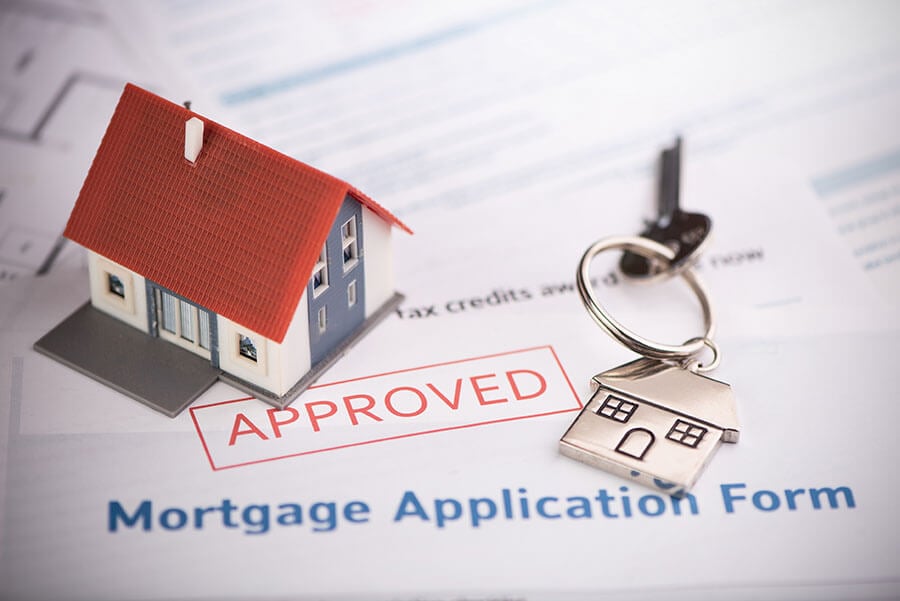Understanding Conventional Mortgage Loans: Advantages and Needs
The Essential Aspects to Think About When Finding In Between Fixed-Rate and Variable-rate Mortgage Car Loans
When evaluating home mortgage alternatives, customers deal with a critical decision in between adjustable-rate and fixed-rate financings, each offering distinctive advantages and potential challenges. Key factors to consider such as interest price security, predictability in regular monthly repayments, and the ramifications of prospective price adjustments can significantly affect lasting monetary health.
Rate Of Interest Security
When picking a home loan, recognizing rate of interest security is vital for informed decision-making. Rate of interest can dramatically influence the general cost of a home loan, and identifying the nature of these rates is essential for debtors. Fixed-rate mortgages use the advantage of regular monthly payments over the life of the financing, shielding borrowers from market variations. This security makes it possible for property owners to intend their financial resources with better certainty, as they will not be impacted by increasing interest rates.
On the various other hand, adjustable-rate mortgages (ARMs) start with reduced first prices that might transform regularly based on market conditions. While this can lead to lower repayments initially, it also introduces uncertainty, as borrowers may deal with raised settlements if rates of interest increase. For those taking into consideration an ARM, it is vital to assess the possibility of rate adjustments, the potential for repayment boosts, and the length of the initial fixed-rate period.
Ultimately, the option between fixed-rate and adjustable-rate home loans pivots on private threat resistance and monetary situations. Comprehending rate of interest security assists customers make informed choices that align with their lasting economic goals.
Monthly Payment Predictability
While customers usually prioritize rates of interest stability, the predictability of monthly settlements is similarly essential in the home loan selection process (Conventional mortgage loans). Regular monthly payment predictability plays an important duty in budgeting and monetary planning, as it straight affects a property owner's money flow and total financial wellness
Fixed-rate home mortgages provide a consistent month-to-month payment throughout the life of the loan, permitting borrowers to expect and intend their expenditures effectively. This stability can be specifically useful for novice property buyers or those on a set revenue, as it gets rid of the uncertainty connected with varying settlements.
Conversely, adjustable-rate home mortgages (ARMs) commonly feature reduced first payments that can change with time, resulting in prospective irregularity in monthly commitments. While at first appealing, this unpredictability can make complex financial preparation, especially if customers do not represent future rate adjustments.
Possible Price Changes
In the realm of adjustable-rate home loans (ARMs), prospective rate changes represent a considerable variable that debtors should meticulously take into consideration. Unlike fixed-rate mortgages, where the rate of interest continues to be unchanged for the life of the funding, ARMs are defined by changing rates of interest that are tied to market indices. This irregularity can bring about significant modifications in regular monthly repayments, affecting the debtor's financial planning and budgeting.
Borrowers have to be aware of the margin and index used to calculate these changes, as they directly affect future rate of interest prices. Additionally, ARMs often consist of caps that limit just how a lot the passion rate can increase at each modification and over the life of the loan, which can offer some degree of security versus drastic rate hikes.
Recognizing these prospective adjustments is important for debtors, as they directly influence lasting repayment commitments. For that reason, assessing individual financial circumstances and take the chance of tolerance is crucial when making a decision whether an ARM aligns with one's monetary objectives.
Loan Term Factors To Consider
Car loan term considerations play a crucial duty in the decision-making procedure for customers choosing in between fixed-rate and adjustable-rate home mortgages. The length of the funding term significantly affects monthly settlements, rate of interest, and general monetary planning. Fixed-rate home loans normally provide terms of 15 to thirty years, supplying security in month-to-month repayments and predictability in budgeting. This can be specifically appealing for consumers that intend to remain in the same home long-lasting and choose the certainty of fixed payments throughout the life of the car loan.

Eventually, consumers have to analyze their personal situations, financial objectives, and market conditions when evaluating the ramifications of car loan term choices within each home mortgage type.

Total Expense of Loaning
Fixed-rate home loans provide predictable month-to-month repayments, as the rate of interest rate stays consistent throughout the financing term. This predictability can lead to reduced overall expenses, specifically in a secure or decreasing interest price atmosphere.
Conversely, adjustable-rate home loans (ARMs) usually start with lower initial rates, resulting in lowered ahead of time prices. These prices can raise after a first duration, leading to possibly greater long-lasting prices. Consumers have to take into consideration the regularity and level of price adjustments, along with the overall funding duration, to accurately examine the monetary ramifications.
Furthermore, the overall price of borrowing incorporates not only interest rates yet also costs and various This Site other associated prices, such as closing prices and insurance (Conventional mortgage loans). Consequently, when examining home mortgage options, consumers must conduct a complete expense analysis over the life of the financing. By doing so, they can make an educated choice that aligns with their financial objectives and risk resistance
Conclusion
Interest price security and month-to-month payment predictability you could check here are extremely important for effective budgeting, while the potential for rate modifications in ARMs presents financial uncertainty. In addition, the expected period of homeownership and the total price of loaning, consisting of rate of interest rates and linked fees, have to align with individual economic conditions and run the risk of tolerance.
Secret considerations such as interest price security, predictability in regular monthly settlements, and the implications of possible price modifications can significantly impact lasting economic health. Interest rates can dramatically affect the overall expense of a home loan, and acknowledging the nature of these prices is necessary for borrowers. Unlike fixed-rate home loans, where the rate of interest rate stays the same for the life of the lending, ARMs are characterized by rising and fall passion rates that are connected to market indices. Furthermore, ARMs typically include caps that limit exactly how much the interest price can increase at each adjustment and over the life of the lending, which can supply some best site level of defense versus drastic price walkings.
Interest rate stability and monthly payment predictability are paramount for efficient budgeting, while the capacity for price adjustments in ARMs presents economic uncertainty.